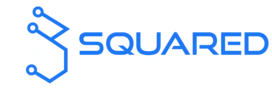The Article Tells The Story of:
- OpenAI disbands its superalignment team, raising concerns about its commitment to AI safety.
- Key departures, including Ilya Sutskever and Jan Leike, stem from conflicts over resources and priorities.
- AI safety efforts are being reshuffled, but doubts linger over balancing innovation with risk.
- As AI advances rapidly, will OpenAI keep control—or lose its way?
The company behind ChatGPT, OpenAI, has dissolved its long-term AI risk team, called the “superalignment team.” That team was assembled last July with the aim of tackling the potential risks that may arise in developing superintelligent AI-technically capable of overcoming its creators. Its disbanding comes weeks after some of its most senior members left the company, including the co-founder and chief scientist at OpenAI, Ilya Sutskever.
Check Out Similar Article of ChatGPT-4 Becoming ‘Lazier and Dumber: OpenAI Responds to Controversial Claims Published on January 7, 2025 SquaredTech
Rise and Fall of Superalignment Team
In its original announcement, OpenAI emphasized that superalignment team’s importance and assigned 20% of its overall computing power to the group, which is co-led by Sutskever and Jan Leike, a former DeepMind researcher. The goal, broadly speaking, has been to work out ways that advanced AI systems can be controlled by humans and serve human values.
However, the team faced significant challenges and internal disagreements over resource allocation and priorities. Leike, who announced his resignation on social media platform X, cited ongoing conflicts with OpenAI leadership regarding the company’s focus and resources for the team’s critical research.
Key Departures and Internal Conflict
That departure was particularly prominent, given Ilya Sutskever’s founding role at OpenAI and his involvement in the controversial sacking and subsequent reinstatement of CEO Sam Altman. Sutskever said he supports the direction that OpenAI is headed but did not give explicit reasons for leaving the company.
Leike’s resignation was attributed to disagreements over the allocation of resources and priorities within OpenAI. He mentioned that his team struggled to secure the necessary computing power to carry out their research effectively. This conflict eventually led to a breaking point, resulting in his departure.
Impact on OpenAI’s Research and Future Plans
The dissolution of the superalignment team has raised concerns about OpenAI’s commitment to addressing long-term AI risks. The team’s responsibilities will now be integrated into other research efforts within the company. John Schulman, who co-leads the team responsible for fine-tuning AI models, will take on a more prominent role in this area.
But the charter of OpenAI is to develop AGI safely and to benefit humanity. While the company has been quick to release a number of experimental AI projects to the public, the recent internal turmoil suggests there may be some challenges in balancing innovation with safety.
Broader Implications and Industry Reactions
Departures and the internal conflicts within OpenAI also echo broader fears in the community of AI scientists concerning the building and deployment of sophisticated AI models. Other renowned voices in the industry, including Strauss Zelnick, chief executive of Take-Two Interactive Software, believe the subscription model will harm new game releases regarding value creation.
With the recent unveiling of GPT-4o, a multimodal AI that can interact with humans in a more natural and ‘human’ way, ethical questions arise on privacy, emotional manipulation, and cybersecurity risks. This new model enables ChatGPT to view and understand the world in more sophisticated ways, potentially changing users’ relationship with the technology.
Future Directions for AI Safety and Governance
Despite the challenges, OpenAI is still working to address advanced AI risks. It has another research group focused on privacy and emotional manipulation-related issues, with a cybersecurity interest: the Preparedness team will continue to be very important to the development of responsible AI.
The latest movements at OpenAI underscore the ongoing tension between innovation and safety in the rapidly evolving field of AI. While the company is trying to expand what AI can do, it concurrently has to balance that with complex ethical and practical considerations that come with such developments.
Conclusion
The decision by OpenAI to dissolve the superalignment team is a significant turn in the way it addresses long-term AI risks. Internal disagreements and the departures of key members further underline challenges in balancing rapid innovation with responsibility in AI development. Moving ahead, OpenAI will have to reassure on issues of safety and transparency so that beneficial AI systems come out with minimal risk to humanity. Continuous AI preparedness and governance in the company would be important for achieving these tasks and sustaining public confidence.
More Updates: Artificial Intelligence


